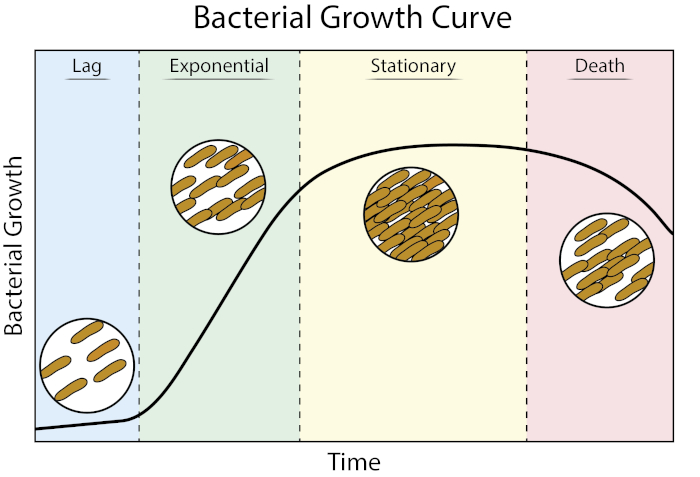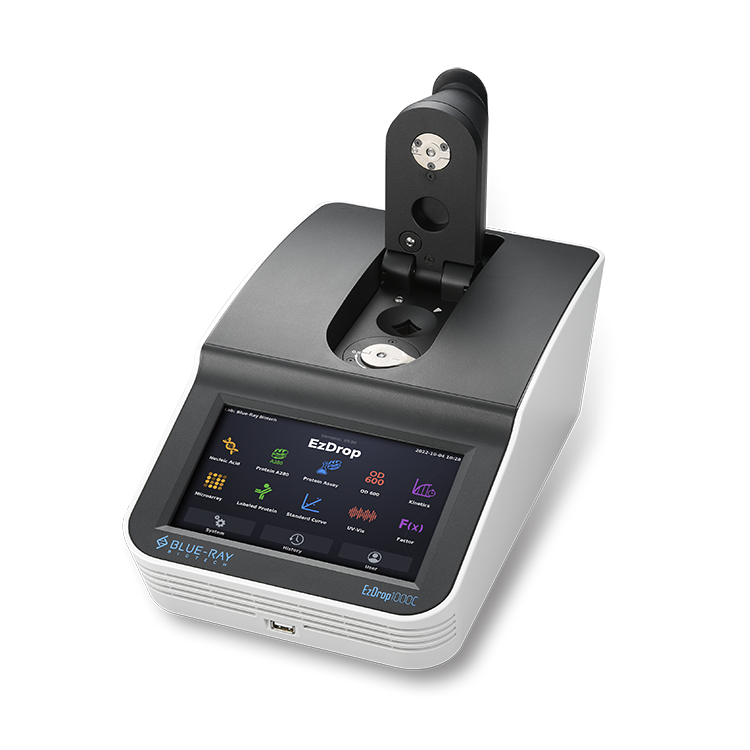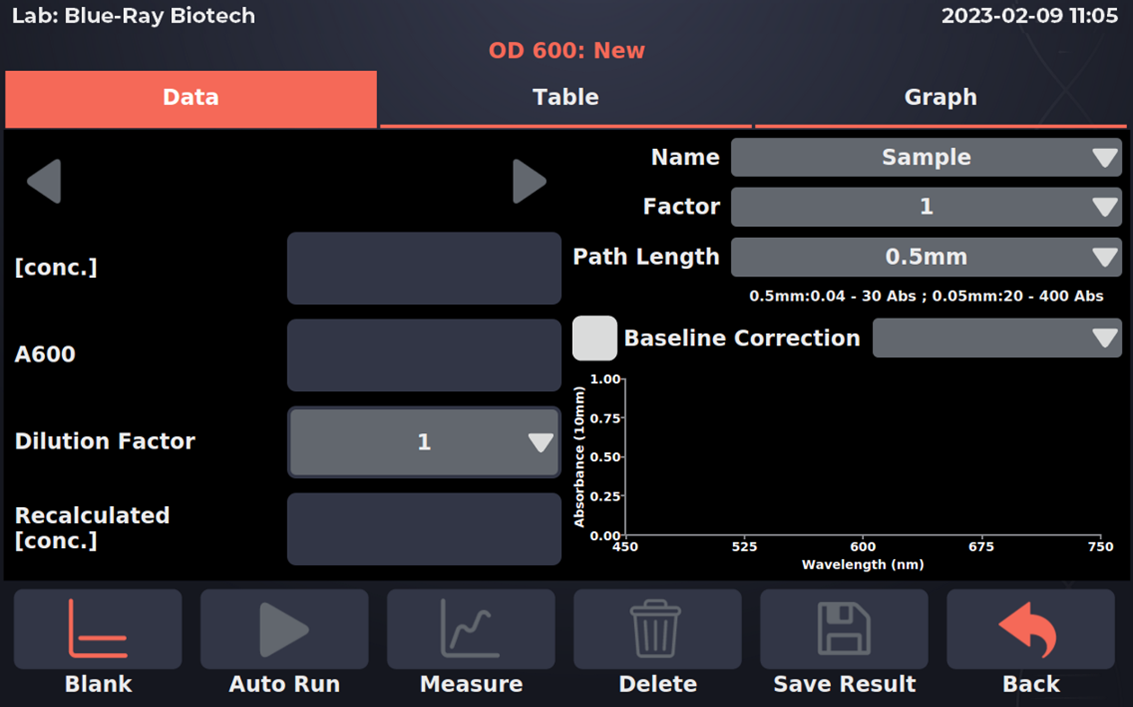OD600 Measurement: A Key Technique in the Microbiology Laboratory
Introduction
Measuring the concentration of cells in bacterial cultures is a common experiment in microbiology. Researchers often use OD600 (Optical Density at 600nm) measurements to quickly estimate bacterial concentration, which in turn helps them understand bacterial growth curves. In general, laboratory observations of bacterial growth rely on experience with culture time and visual turbidity to infer cell concentration. However, if an experiment requires the use of bacteria in a specific growth phase, OD600 measurements using a spectrophotometer will help with the accurate determination of bacterial cell concentration and stage of growth. This note summarizes the principles and applications of OD600 measurements and introduces the EzDrop 1000C spectrophotometer for the rapid performance of OD600 determinations.
Principles and Limitations of OD600 Measurement
OD stands for optical density, and OD600 refers to absorbance value measured at 600nm, commonly used to measure cell culture concentration (cells/ml). Absorbance is directly proportional to the concentration of absorbing material in the solution, according to the Beer-Lambert law. However, it should be noted that this only applies to light absorbed by matter in solution, but OD600 measurements of bacterial cell concentration involve light being scattered by bacterial cells in suspension.
In such turbid samples where light is scattered by particles such as microbial cells suspended in a liquid culture, it impossible to establish any direct linear relationship between OD600 measurements and cell concentration. The OD600 value depends on the amount of light scattered by the bacteria in suspension. The size, shape, and structure of the bacterial cells will affect this scattering and lead to variations in OD value.
In addition, different brands of spectrophotometer have different optical system components, which can also affect the amount of light scattered. Therefore, the OD600 values of a sample may be different on different spectrophotometers. Consequently, the establishment of a standard OD600 curve, using dilutions of the particular bacterial culture being used should be done before using the method to determine bacterial concentration. The curve can then be used to accurately determine cell concentration at a range of different OD600 value. The same method can be used for yeast cultures.
Monitoring Bacterial Growth Curves Using OD600
The most commonly encountered laboratory cultures are of Escherichia coli. When measuring the absorbance of such bacterial cultures at 600nm, the values obtained provide valuable information about cell growth. For instance, an OD600 value of between 0.6-0.8, indicates that the culture is in the logarithmic growth phase of rapid growth. When the OD600 value of a bacterial culture exceeds 0.8, proliferation has probably stopped and transfer to fresh culture medium is necessary to maintain normal cell growth. In any case, an OD600 value of more than 1.0 suggests that the bacteria have reached saturation and are ready for subculture.

OD600 Measurement Using EzDrop 1000C
The EzDrop 1000C has been designed for measuring DNA/RNA, proteins, and microbial concentrations. It has both cuvette and drop modes. Cuvette mode allows rapid quantitative analysis of microliter volumes of biological samples (1 ml). The quartz glass cuvettes used have a fixed optical path length of 10 mm. These give excellent measurement accuracy and reduce light scattering. This makes them ideal for OD600 measurements. Simply add the sample to the cuvette, and place it in the EzDrop 1000C spectrophotometer. The measurement will be completed automatically in a few seconds.

EzDrop 1000C Micro-Volume / Cuvette Spectrophotometer

EzDrop 1000C OD600 Measurement Interface
The Cuvette mode of the EzDrop has an absorbance range of 0.002 to 1.5. If the sample exceeds this range, dilutions should be used. The user-friendly instrument interface allows entry of the cell number concentration factor (default value is 1x108) and a dilution factor before measurement. The instrument can directly display the original bacterial solution concentration (Recalculated [conc.]).
Conclusion
Optical Density measurement at 600nm is a common method for estimating bacterial concentration and plays a significant role in microbiological research. A thorough understanding of its principles, advantages, and limitations, will allow the appropriate measurement techniques to be used and the EzDrop 1000C spectrophotometer can be more effectively applied in the laboratory.
Reference
- Apparent diameter and cell density of yeast strains with different ploidy
- Why is 600nm wavelength recommended for optical density check of bacteria culture and is there any literature to back it?
-
Kamonnaree Chotinantakul, Wipa Suginta, and Albert Schulte.(2014) Advanced Amperometric Respiration Assay for Antimicrobial Susceptibility Testing.Analytical Chemistry.
Related Post:
What is the significance of the 260/280 and the 260/230 ratios of nucleic acid purity?
Comprehensive Nucleic Acid Quality Control: Total Solutions for Molecular Experiment Issues
.jpg)